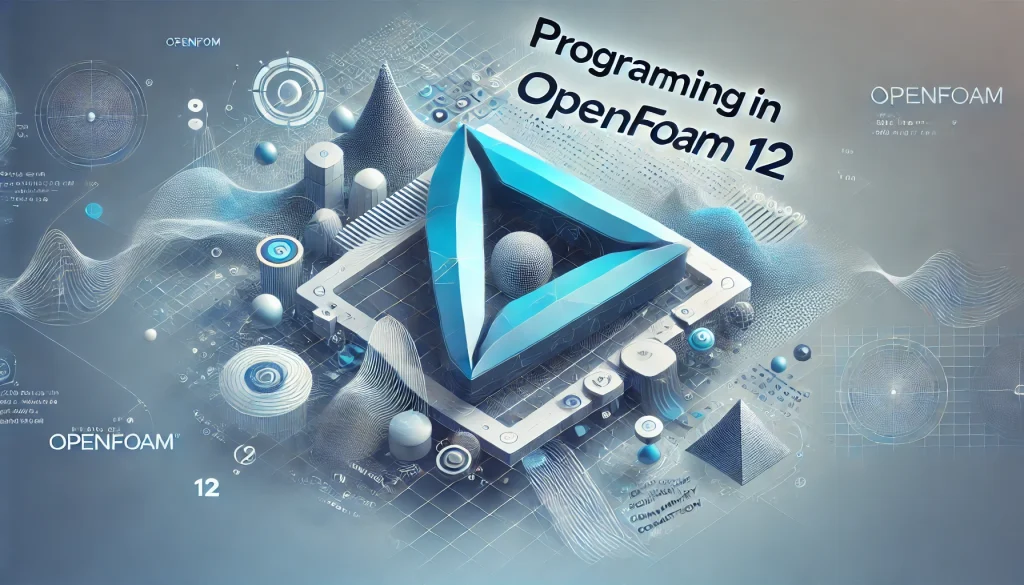OpenFOAM has always been a powerful open-source tool in the realm of computational fluid dynamics (CFD). If you’ve ever dabbled in CFD or are working on complex fluid problems, you’ve likely heard of it—or even used it. But what truly sets OpenFOAM apart isn’t just its ready-to-use solvers and boundary conditions. It’s the ability to program and customize the code for specific needs.
Why is this important? Because in a research or industrial setting, you often come across unique engineering problems that don’t fit neatly into pre-packaged solvers or boundary conditions. By modifying or creating your own models in OpenFOAM, you gain the flexibility to explore innovative solutions, test ideas quickly, and address specialized challenges. In short, you’re no longer limited by what comes “out of the box.”
What’s New in OpenFOAM 12?
OpenFOAM 12 continues the tradition of regular updates and improvements, but it also introduces several changes that are especially relevant for those who want to expand its capabilities through programming:
- Improved Programming Interfaces
- One of the first things you’ll notice is the cleaner, more modular approach. This reorganization means you can more easily integrate new functionalities without sifting through layers of complex code.
- Enhanced Scalability
- Large-scale simulations benefit from optimized algorithms, making your custom code more efficient when running on powerful hardware or clusters.
- New and Updated Models
- With refined models for scalar transport, viscosity, and boundary conditions, you can kick-start your custom solver developments. The improved models also give you better accuracy right out of the gate.
- Streamlined Code Structure
- The new directory layout and updated class hierarchies make it clearer where your custom modifications should live. You spend less time searching for the right file and more time coding.
All these enhancements help both new and experienced developers get up and running with customizations faster.
Sessions on Programming in OpenFOAM 12
Session 1: Viscosity Model Development
In this first session, we tackle a custom viscosity model, specifically the Power Law Model for non-Newtonian fluids:
- Power Law Basics: Understanding flow consistency, behavior indices, and how they define non-Newtonian flow.
- Customization: Adding a scaling factor to the Power Law Model for increased flexibility.
- Integration: Walking through the process of embedding this custom model into OpenFOAM’s solvers.
Session 2: Custom Boundary Conditions
Next, you’ll learn how to design boundary conditions that suit your unique problem setup:
- Copy & Modify: We start with an existing boundary condition (like
swirlInletVelocity) and adapt it to meet specific simulation needs. - Structure & Files: A quick rundown of
.Cand.Hfiles and how they fit into the boundary condition framework. - Compile & Run: Finally, we compile our custom boundary condition and show you how to integrate it into your simulations.
Session 3: Scalar Transport Equation
The last session focuses on implementing a scalar transport equation, commonly used for temperature or species concentration:
- Equation Breakdown: We delve into advection, diffusion, and source terms, understanding how each part contributes.
- Solver Modification: You’ll learn how to modify existing solvers to incorporate your custom scalar transport needs.
- Practical Test: We demonstrate the setup for testing these changes with example cases to ensure everything works as intended.
Download the Cases
All the cases demonstrated in the sessions are available on GitHub. Feel free to download them, modify them, and experiment with different parameter settings. This hands-on approach will help you understand the ins and outs of programming in OpenFOAM and get you comfortable with making deeper customizations.
Conclusion
Programming in OpenFOAM opens the door to a world of possibilities, whether you’re a researcher looking to push the envelope of CFD innovation or an engineer aiming to solve specialized industrial problems. With version 12, OpenFOAM has become even more accommodating for developers, thanks to its improved structure, refined models, and streamlined interfaces.
If you’re ready to unlock the full potential of OpenFOAM, dive into these sessions, download the example cases, and start experimenting. Stay tuned for more tutorials and resources in future posts, and don’t hesitate to share your experiences or ask questions along the way. Happy coding, and happy simulating!


Can OpenFOAM be Used for Simulating the Behavior of Non-Newtonian Fluids in Artistic Applications?
Yes, OpenFOAM can simulate non-Newtonian fluids and is usable for artistic applications like paint flow, clay deformation, or dripping effects. It supports various viscosity models (e.g., Herschel–Bulkley, Carreau) and can model realistic behaviors such as shear thinning or yield stress. While it’s designed for engineering, artists or developers can use it as a physics engine and export results (e.g., fluid shapes or velocities) to tools like Blender or Houdini for visual rendering. It’s not interactive or stylized by default, but with creative setup and post-processing, it can support physically-informed fluid art.